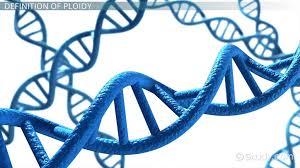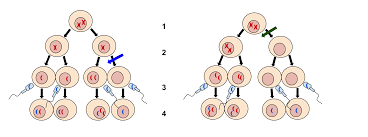Genic imbalance is an important genetic consequence of aneuploidy. There are, however, other genetic consequences that need to be understood. In this article, therefore, more detail consideration of aneuploidy and their genetic consequences will be taught.
Nullisomics (2n-2)
Although nullisomy is a lethal condition in diploids, an organism such as bread wheat, which behaves meiotically like a diploid although it is a hexaploid, can tolerate nullisomy. The four homoeologus chromosomes apparently compensate for a missing pair of homologs.
In fact, all the possible 21 bread wheat nullisomics have been produced; they are illustrated in Figure. Their appearances differ from the normal hexaploids; furthermore, most of the nullisomics grow less vigorously.
Monosomics (2n-1)
Monosomic chromosome complements are generally deleterious for two main reasons. First, the missing chromosome perturbs the ovrall gene balance in the chromosome set. (We encountered this effect earlier).

Read Also : How to Plant Fruit Trees for Optimum Performance
Second, having a chromosome missing allows any deleterious recessive allele on the single chromosome to be hemizygous and thus to be directly expressed phenotypically. Notice that these are the same effects produced by deletions.
Trisomics (2n+1)
The trisomic condition also is one of chromosomal imbalance and can result in abnormality or death. However, there are many examples of viable trisomics. Furthermore, trisomimcs can be fertile.
When cells from some trisomic organisms are observed under the microscope at the time of meiotic chromosome pairing, the trisomic chromosomes are seen to form a trivalent, an associated group of three, whereas the other chromosomes form regular bivalents.
Genetic Analysis of Trisomics for Allelic Constitution
The method is similar to that of triploids.
In summary, the adverse effect of genic imbalance characteristic of aneuploidy not only affect the organism but also gametes. Aneuploid gametes have lower fertilizing efficiency and therefore causes reduced fertility.
Nullisomy (2n–2): Nullisomy is lethal in diploids, amphidiploids (allopolyploids) survive as a result of chromosome compensation.
Monosomy (2n-1): Monosomic show the deleterious effect of genome imbalance. They are hemizygous for deleterious recessive alleles on the monosomic chromosome.
Trisomy (2n+1): Trisomics show the deleterious effect of genome imbalance. However, unlike in monosomy, deleterious recessive alleles are masked by the dominant alleles on the trisomic chromosome.
Read Also : Methods of Disposal of Waste Pesticide Containers
Frequently Asked Questions
We will update this section soon.

